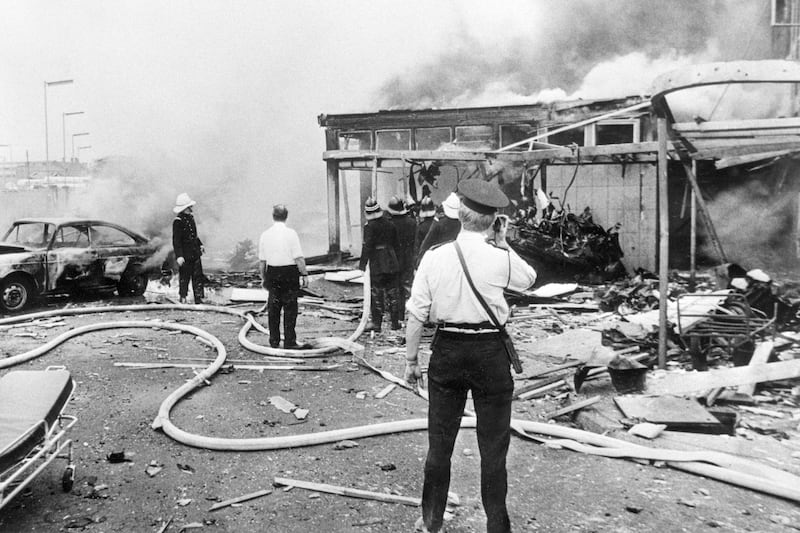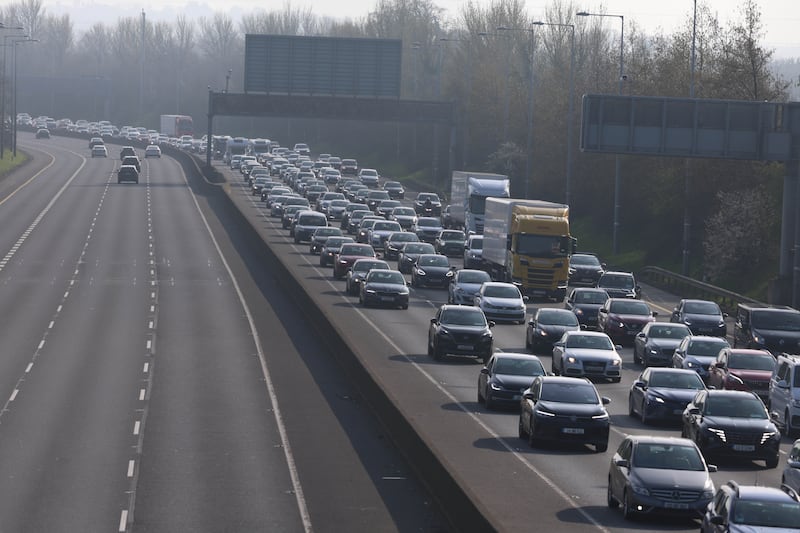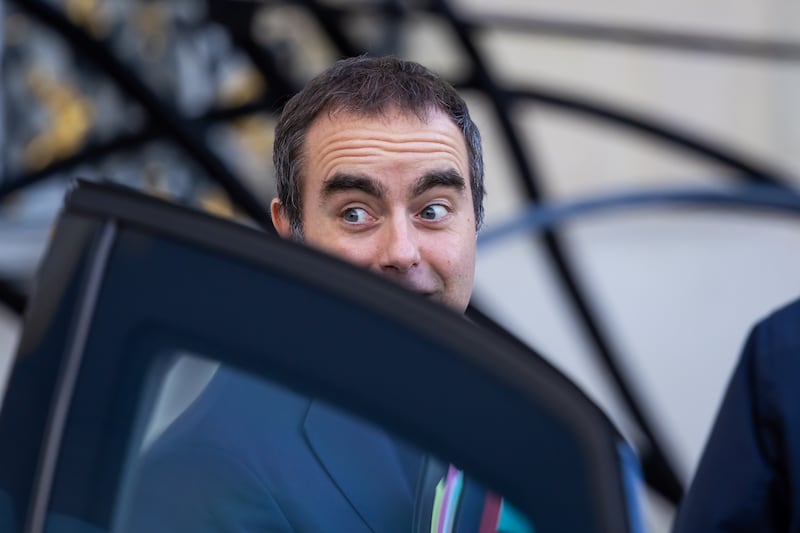Should the State support fee-paying schools? It’s a debate that raged during the last recession in Ireland – and it’s back on the political agenda again.
Both Sinn Féin and Labour have pledged that, if in government, they would phase out taxpayers’ funding of over €112 million for fee-paying schools.
Both parties say these types of schools perpetuate inequality, while a recent academic paper from Trinity College law lecturer Dr James Rooney revealed that, since the foundation of the State, 62 per cent of all Supreme Court judges attended fee-paying schools, mostly Catholic-run and single-sex.
In the past decade, several formerly private schools have dropped fees and entered the free scheme, which was initiated by then minister for education Donogh O’Malley in 1967. These include Ireland’s only Quaker school, Newtown School in Waterford and four Protestant schools: Royal School Cavan, Wilson’s Hospital School in Co Westmeath, Kilkenny College and St Patrick’s Cathedral Grammar School in Dublin 8.
READ MORE
Until the last recession, these schools were all allowed to keep a slightly higher pupil-teacher ratio, largely to reflect that they had a broader catchment area due to the dispersed nature of Ireland’s Protestant minority and, in turn, that the only viable way for some children to attend a Protestant school was to board. They also tended to have lower enrolments, so the dispensation allowed them to continue offering a wider range of subjects with fewer teachers.
This year will mark a decade since St Patrick’s Cathedral Grammar School – which says it is the oldest second-level school in the State, founded in 1547 – joined the free scheme. Why did they do it, how has it gone and what can other schools learn from their experience?
“At the time, Ireland was in a financial crisis, the government chose to implement education cuts across the board, and ancillary grants to Protestant schools were dropped,” recalls school principal Tim Gill.
“The block grant to Protestant schools had been intended to allow us to remain fee-charging but to have some benefits of being in the free scheme. So these cuts created financial difficulty for schools like ours. Coupled with changes to the pupil-teacher ratio, and parents under increased pressure to afford fees, it was a perfect storm.”
One of the benefits we saw was the removal of a barrier to education
— Tim Gill
Today, the austerity demanded by the Troika after Ireland’s bailout is a receding memory, although the cost-of-living crisis has seen many families under renewed pressure to afford school fees.
St Patrick’s came to the conclusion that they could not survive unless they went into the free scheme.
“It was a big deal,” says Gill. “We had some funding from the Government for decades. We had been fee-paying for centuries. It was a complicated transition. Schools like ours employed more than teachers, and we privately employed some teachers using the fees. There was a lot of concern about teacher jobs and livelihoods.
“The fees had allowed us to employ extra teachers which, in turn, allowed our small school to maintain a broad curriculum and offer choice so that our students had choice and an equal opportunity.”
Entering the free scheme meant that the school was compelled to grow.
“Ten years ago, we had 120 pupils,” says Gill. “Today, we have 300. The growth has been necessary because, in the free scheme, funding depends on numbers, so more students means more teachers and more funding.”
This growth has not always been without pains, however, as school management worked to hammer out when things would happen, entering the free scheme with lower student numbers, they found themselves over quota.
A similar problem would immediately confront any fee-paying school that entered the free scheme today.
At the time, the Department of Education allowed St Patrick’s to remain over quota, albeit on a strict timeline. It is likely that, should a future government follow through on withdrawing State support for fee-paying schools, there would also be a phased transition, allowing the schools to increase their pupil numbers within an agreed timeline.
Ten years on from their decision, Gill says that it was, at the time, purely a financial calculation.
“If we didn’t do this, we could not sustain the school on a solid financial footing. Our hand was forced. In hindsight, it was the right thing to do. Today, our school is thriving. With the higher enrolment, we have increased our extracurricular options, and those increased numbers have also made it easier to fill a soccer team, and to offer a broader curriculum.”
Fee-paying schools, as well as schools in geographically wealthier parts of Ireland – particularly higher-income postcodes in north and south Dublin – have tended to send a disproportionately high number of students to third-level, compared to disadvantaged schools in the same counties. Entering the free scheme, inevitably, meant that more students from less wealthy backgrounds could enroll, and this made the student body – and the student experience – much more diverse.
“One of the benefits we saw was the removal of a barrier to education,” says Gill. “As we have an inclusive ethos, it meant that we could more fully realise it. Our school has long had links with St Patrick’s Cathedral itself, but we have never seen ourselves as just a Church of Ireland school; we have always been here to serve the local community, with a broad range of religions and nationalities in a diverse student body that matches our ethos of inclusion.”
As part of its links with the cathedral, the school has always excelled in music, and it has been able to draw on a wider cohort of talent since its expansion. Today, it offers a music scholarship to children from local primary schools, and it also offers financial assistance to families so that students can develop their music education.
Trish Harrington, the school’s guidance counsellor, says they also have a variety of outreach programmes with local businesses. Some of these help young people to progress from senior cycle to further and higher education, some empower gifted students and others provide opportunities for volunteer work or work experience.
“In recent years, with the accommodation crisis affecting students, we have had to carefully plan to ensure our students can progress despite the lack of housing,” says Harrington. “We are very focused on ensuring that all our students can avail of all their options, including through careers fairs, scholarships, and a variety of pastoral care initiatives to ensure they have a happy and fulfilling school experience.”
Were there any drawbacks to joining the free scheme, or ways in which St Patrick’s might hope the process would play out differently if they were only making this decision in 2024?
“A little like the French Revolution, it’s a little early to tell,” says Gill. “As to what happens in the next downturn, that remains to be seen.”
Private schools: in numbers
49 – the number of fee-charging schools
5 – fee-charging schools that entered the free scheme over the last decade
7% – proportion of second-level students attending private schools
€112 million – annual State funding for fee-paying schools, mostly towards teachers’ salaries
23:1 – student-teacher ratio paid for by the State in private secondary schools, compared to 19:1 in free sector
- Follow The Irish Times education section on Facebook and X (Twitter) and stay up to date

















